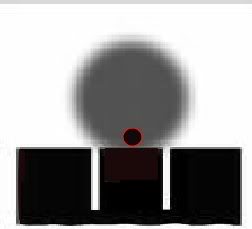You seem to be completely off the point.
"Zero" and sight picture are 2 different concepts on "accuracy". A gun can be perfectly zeroed, but if
using the wrong sight picture (determined by the sight heights, not the user), and testing properly, the POI will off elevation.
All this talk about "sight picture" may not even be real world relevant, because at close distance (pistol engagement distance) combat or center or 12 oclock doesn't really make a difference if making multiple holes in center mass. Add panic shooting under stress, and the POI group becomes a 12" circle even at close combat distance.
Plus, most shooters can't properly use the sights to worry about the difference in "sight picture". Is it the gun or the shooter that is the problem?
So sight picture effect is only relevant when shooting off a rest at the range under ideal conditions.
![Image]()






